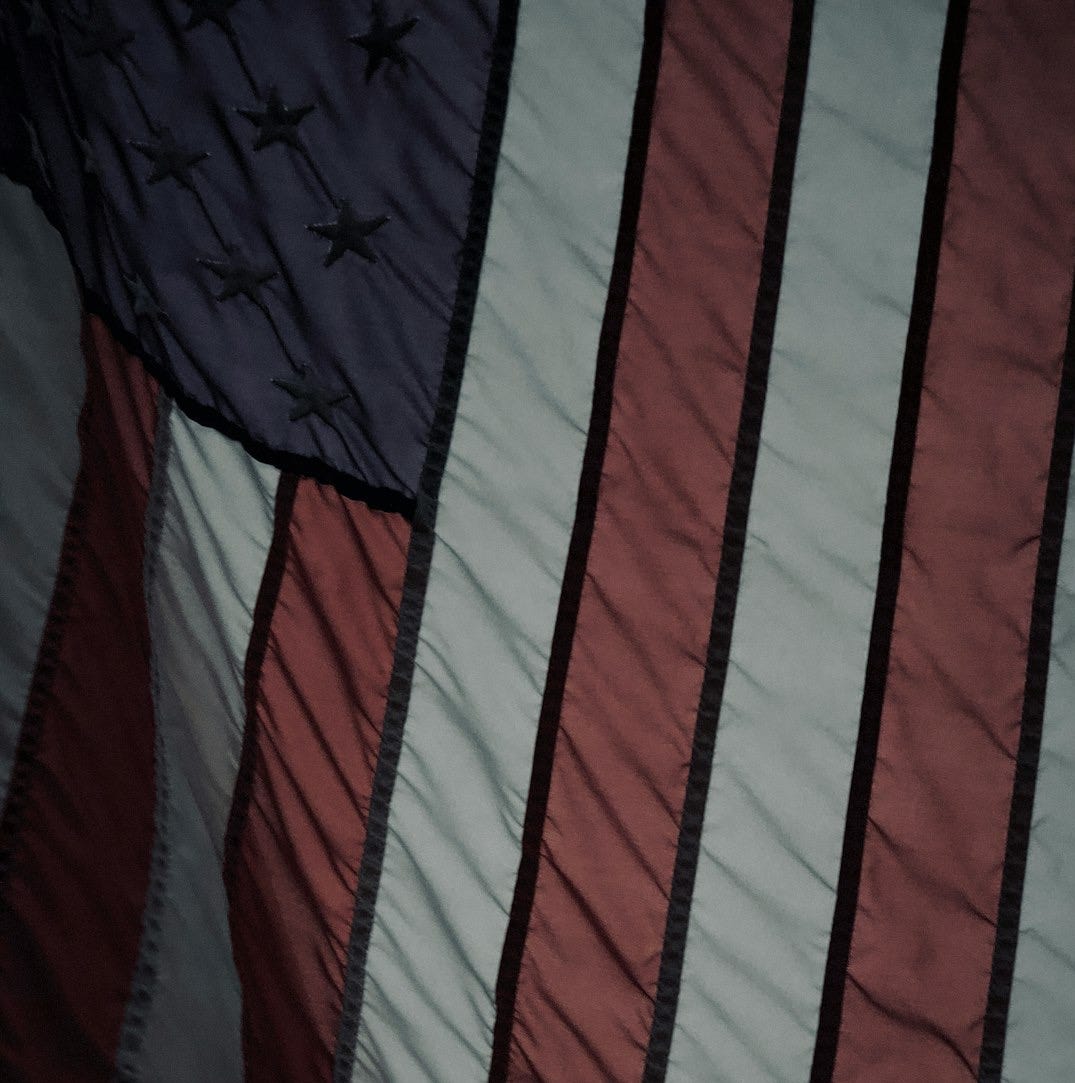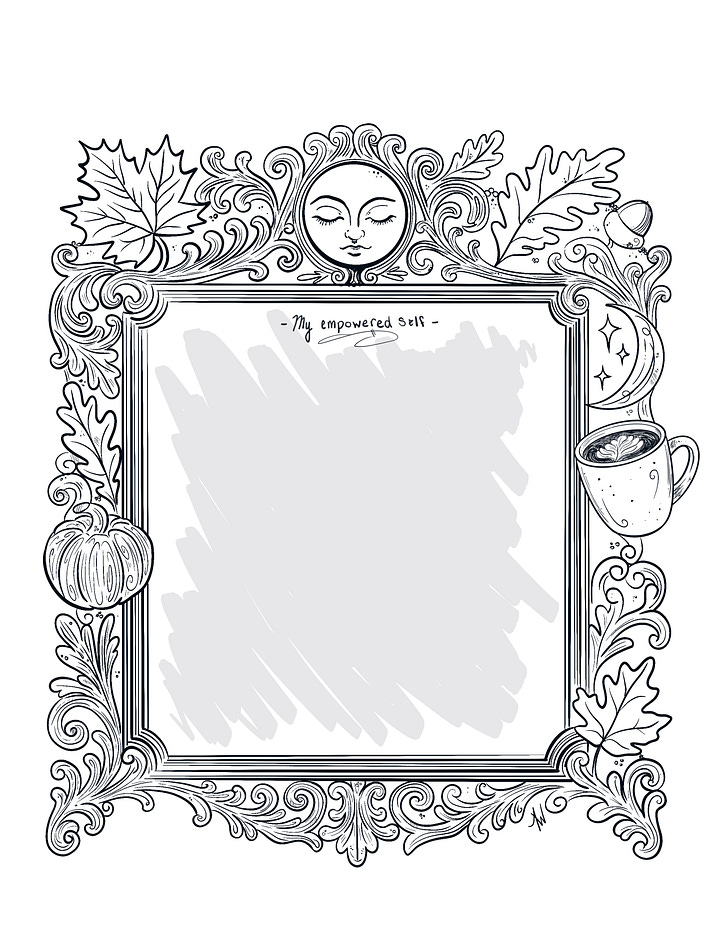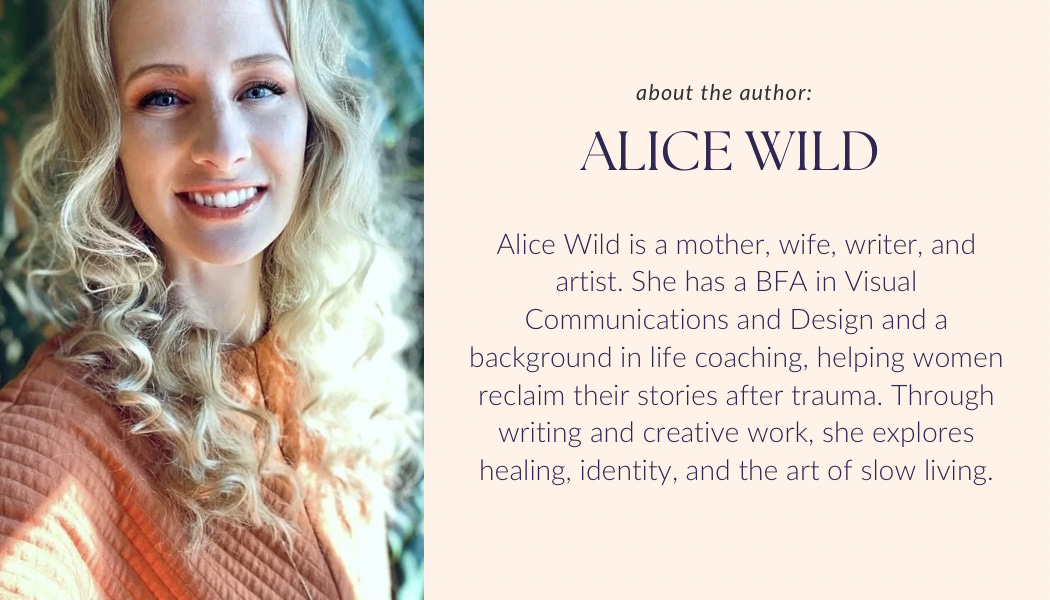Doom, Gloom, and One Hell of a Week
Childhood ghosts, school shootings, and daring to imagine a life beyond survival
It’s been a heavy week, hasn’t it?
The kind of week where headlines feel close enough to brush against your skin, where the world tilts ever so slightly and nothing feels safe or far away.
The news came in a call from a loved one: there had been a shooting at Evergreen, one of the very schools we’d considered for our children in our Colorado plans this year. My heart broke for these families. Hours later, my daughters came home from school, backpacks swinging, voices bright, telling me about the lockdown drills they’d practiced that day.
“Mom, did you know our classrooms have bulletproof glass?” my nine-year-old said, her face alight with curiosity, as if she’d just learned a fun fact. My breath caught. Her classroom—and her sister’s—faces the outside world, lined with towering windows that stretch almost to the ceiling.
That evening, my husband and I sat at the kitchen table in the fading light, a list of Colorado schools glowing on the laptop screen, every option feeling heavy, uninspired. He spoke softly of Charlie Kirk’s sudden death, of the strange and piercing grief that had lodged in his chest for a man he had never met, a man whose views did not always align with our own. But grief doesn’t care about alignment. It comes when it pleases—sharp, painful and absolutely human.
I went to bed carrying so much weight, listening to
’s voice read All the Way to the River, her words flowing like a balm over the noise of the world.But the night was unkind.
I dreamed I was back in elementary school, sitting alone at a cafeteria table, clutching my books like armor, invisible. The loneliness was so sharp it felt physical, a blade pressed against my ribs. I wandered hallways filled with echoes, carrying the same ache that had haunted my childhood, an ache so deep it made existence feel unbearable.
In my dream, I was not only reliving my own ache; I was haunted by the fear that my daughters might one day walk these same lonely hallways, clutching books to their chests, learning to disappear the way I once did. Living in such pain and fear.
I woke a little after five am, terror still flooding my body, anxiety buzzing in every cell like static electricity. The world outside was quiet, but inside me there was only dread, alive and thrumming beneath my skin.

Hello, Fear, My Old Friend
I knew this feeling well. Fear has been an old companion of mine, shadowing me for so much of my life that its presence feels almost familiar, like a melody I wish I could forget. It reverberates through my body, winding itself through every nerve, whispering that this is forever—that the dread will never end, that suffering is inevitable.
It tells me to prepare for disaster, to rehearse every worst-case scenario, to live in the future’s shadow as though calamity is the only story worth practicing. It paints my choices in stark, unforgiving colors: either I stay here in the Midwest and wither—body or spirit—or I take my children to Colorado, where tragedy will find them instead.
Fear doesn’t deal in nuance; it trades in absolutes. Pain here, pain there. No door without suffering behind it.
And why wouldn’t it? My body knows suffering as a native tongue. The past six years have etched it into my bones. If anything has been certain, it is this: pain is the rhythm of my life, my inheritance, my daily bread.
In these moments, I feel like Job himself, stripped bare under a sky gone silent, convinced all hope has been wrung out of me.
But That’s Not Acceptable to Me
Yet even in the middle of all my mind’s catastrophizing, there is a stubborn ember in me that refuses to go out—a quiet insistence that there must be a way forward. It took me a while to hear her this time.
To be honest, I often swing like a pendulum between two extremes: the pit of despair and learned helplessness, where everything feels doomed… and a euphoric, romanticized hope that denies obstacles altogether, convinced I can simply will goodness into being. The truth lives somewhere in the middle, but it takes everything in me to hold that balance.
This morning, I knew I was deep in the despair camp. And I needed to see if I could climb out, even just a little. Because these are not small decisions we’re making. These are life-shaping, soul-weighing decisions—and when the headlines are filled with school shootings, when education feels fractured, when AI looms over our children’s future like a rising tide, how do we choose what’s best for them?
It feels impossible.
But beneath that impossible question, I named my deepest fears aloud to my husband. I told him of my dream, and the echoes it stirred from my own childhood—of being a small girl, utterly unequipped to navigate the world I was dropped into.
A girl who learned early that her identity could be stripped away with a single glare. A girl taught that her worth was not her own but belonged to the opinions of others, and that the loudest, angriest voice in the room with the most authority—especially if it belonged to an older white man—was always my higher power.
She had no one. She was no one. She was worth nothing.
Letting Go
“And do you feel like we’re setting our children up in the same way?” my husband asked softly.
No. God, I hope not. It’s my deepest fear.
I realized in that moment that it isn’t only my daughters’ pain I’m afraid of—it’s my own. I fear reliving my childhood through them, but even more, I fear that I am already reliving it now. Sitting in this house, in this state, in this life that feels more like survival than living, I can feel the ghosts pressing in. Nebraska has taken so much from me. It has cost me nearly everything.
Most days, I can barely get dressed. I don’t care what I wear. I am on autopilot, moving through the motions: feed them breakfast, pack the lunches, drive to school, come home to an empty house and try to breathe. I have lost all hope, all vitality. I exist, yes—but only to keep my children alive and safe.
I want more than that. I want the desire to live again, to model for them what a life filled with possibility looks like. And I don’t believe I can find that here. This place hums with trauma; the air feels thick with pain, each memory a weight pressing on my nervous system, suffocating me.
Therapy has been a lifeline, but even it feels like a drop of water in a dark, endless ocean.
I have come to accept this pain, this heaviness, as my reality. But I am daring to want more. I want the choice to no longer accept it. I want a life where breathing feels easy again, where light returns, where healing is more than survival.
I want a life that feels like living.
Conclusion
So, this morning, as my husband drove the girls to church and I wrapped my hands around a warm mug of decaf Earl Grey, I felt something small but undeniable stirring in me: hope.
We may never be able to shield our children—or ourselves—from suffering entirely. Helplessness and hopelessness may be well-worn grooves in my brain, traits I learned to survive, scars of CPTSD etched into my nervous system. But scars are not the same as destiny. These patterns do not have to remain my story.
Maybe the path forward looks unconventional: homeschooling, a co-op, or something I haven’t even imagined yet. Maybe I’ll step back into work, even if it isn’t glamorous or perfect. Maybe healing is the long, slow work of making space for joy and daring to believe that I, too, deserve the very goodness I so desperately want for everyone else.
“Just for today, I need you to stop looking for all the reasons that you are doomed and wrong.”
—
, All the Way to the RiverI heard those words this morning, moments before I began writing this. So here I am, choosing to try.
Some days, all we can do is try—minute by minute—and decide that our past no longer has to define us.
With love,
Alice Wild
Wildflowers Grow
Behind-the-Scenes:
Our Fall series: The Wild Return, and the companion journal is almost done! I will be releasing it either September 30th or October 7th—those are both Tuesdays. Or do you like to read posts on Sundays?
I’ve been hard at work creating a companion creative journal for this series, dusting off my graphic design background and professional illustration skills. It mattered deeply to me that every illustration in this journal was entirely hand-drawn—no AI, just pencil, paper, my iPad and a return to the craft I love. It’s been a long time since I’ve worked like this, and I’ll admit I was a little rusty at first. But as you flip through its pages, you may notice the artwork becoming more intricate and confident with each spread—that’s me finding my rhythm again, one line at a time.




Stay tuned for the release!
With all my love,
Alice
Wildflowers Grow is a Mental Health publication, featuring memoir and fiction writing by Alice Wild for women and survivors. It is a safe space to rest and grow—flourish and connect. And also a publication to amplify the light within the voices of those who have been silenced.
Consider becoming a paid reader to support this publication, join like-minded female voices and gain access to the ever growing Wildflowers Grow private paid reader bookshelf.
If any part of this post resonated, consider subscribing and giving this post a like, comment or share to support this safe space and to support women getting paid for their work and the voices of women everywhere—especially those who have been silenced.



I understand everything you’ve shared here. Especially at it pertains to what is best for our families in times like these, and the dance between euphoric hope and soul-crushing despair. May we all lean into those feelings of hope and store them up for those inevitably stormy days. 🙏 sending you love.
Love this so much, “But scars are not the same as destiny. These patterns do not have to remain my story.”